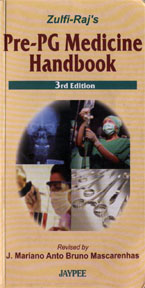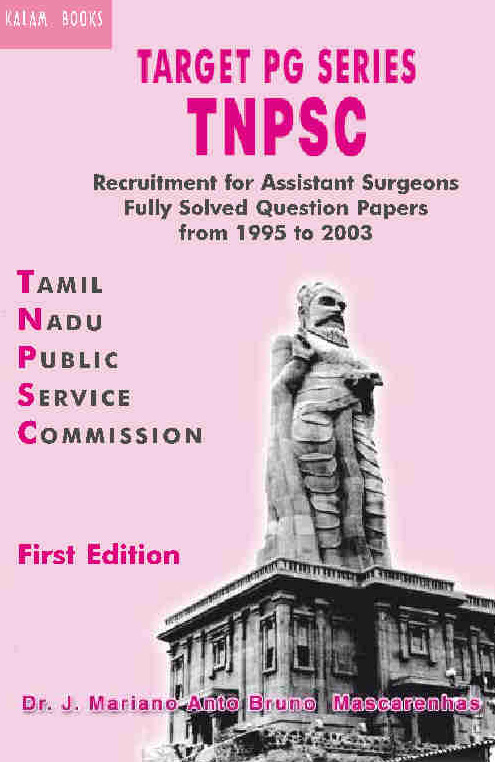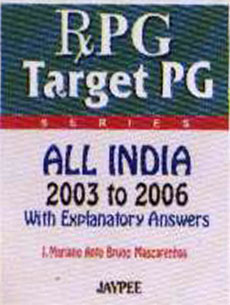BIOCHEMISTRY & BIOPHYSICS
1) If the pH is 7.4 then the Hydrogen Ion concentration is
a. 40 mmol/ml
b. 7.4
c. 50
d. None of the above
Answer (a) 40 mmol/ml
Reference: Harper 27th Edition Page 9
Ä When pH is 7.4, the H+ ion concentration is 40 nanomoles/L
2) Anion gap
a. Is the difference between the unmeasured anion and cation
b. Is the difference Measured cations and Anion
c. Both
d. None
Answer (c) Both of the above
Reference: Chaterjee 6th Edition Page 630
3) Trypsin is a
a. Serine Protease
b. Maltase
c. Lipase
d. None of the above
Answer : a) Serine Protease
Reference: Chaterjee 6th Edition Page 397
4) Scurvy is due to deficiency of
a. Vitamin A
b. Vitamin C
c. Vitamin B1
d. Vitamin B2
Answer (b) Vitamin C
Reference: Chaterjee 6th Edition Page 158
5) All of the following components are the common substance with Anti Oxidant properties Except
a. Vitamin D
b. Vitamin C
c. Vitamin E
d. Selenium
Answer a) Vitamin D
Reference: Chaterjee 6th Edition Page 128, 129
6) In
a. Sunlight
b. Injections
c. Diet
d. None of the above
Answer (a) Sunlight
Reference: KD Tripathi 5th Edition Page 303
7) A person on a fat free carbohydrate rich diet continues to grow obese. Which of the following lipoproteins is likely to be elevated in his blood?
a. Chylomicrons.
b. VLDL.
c. LDL.
d. HDL.
Answer: 2. VLDL.
Reference : Harper 25th Edition Page 296,
8) Enzyme defcint in Alkaptanuria is
a. Homogentiase Oxidase Deficiency
b. Folate Synthetase
c. DNA Gyrase
d. Transpeptidases
Answer (a) Homogentiase Oxidase Deficiency
Reference: Harper 27th Edition Page 259
9) The enzyme deficient in Criggler - Negar Syn Type I is
a. Folate Synthetase
b. DNA Gyrase
c. Transpeptidases
d. Udp Glucornyl Transferase
Answer: (d) Udp Glucornyl Transferase
Reference: Harper 27th Edition Page 270
10) Which of the following is not a HomopolySaccaride
a. Heparin
b. Dextran
c. Inulin
d. Starch
Answer Heparin
Reference: Chaterjee 6th Edition Page 35
11) Fatty acid synthesis complex does not contain this enzyme used in fatty acid synthesis
a. Acetyl coa carboxylase
b. Enoyl reductase
c. Ketoacyl reductase
d. Hydratase
Answer (a) Acetyl coa carboxylase
Reference: Harper 27th Edition Page 197
12) Metabalic alkalosis occurs in
a. Recurrent vomiting
b. Diabetic Ketosis
c. Diarrhoea
d. All of the above
Answer (a) Recurrent Vomiting
Reference:
13) Major anion in ECF
a. Protein
b. Cl-
c. HCO3
d. None of the above
Answer (B) Cl-
Reference: Ganong 22nd Edition Figure 1.27
14) Stop Codons
a. UAG,
b. UGA
c. UAA
d. All
Answer (d) All of the above
Reference: Harper 27th Edition Page 366
15) Weakest bond
a. Vanderwalls bond
b. Covalent
c. Ionic
d. Gravitational
Answer (a) Vanderwalls bond
Reference: Harper 27th Edition Page 7
16) All of the following are involved in various steps of Electron transport chain except:
a. NADP
b. NAD
c. Co Enzyme Q
d. CoA
Answer (a) NADP
Reference: Harper 27th Edition Page 103
17) Consumption of Ethanol leads to increased levels of
a. Lactate
b. acetaldehye
c. NADH
d. All of the above
Answer: All of the above
Reference: Harper 27th Edition Page 225
18) Un acceptable type of Missence Mutation is
a. Hb M
b. Hb Hikari
c. Hb S
d. None
Answer : (A) Hb M
Reference: Vasudevan 2nd Edition Page 308
| New Hb | Effect |
| Hb Bristol | No functional Change |
| Hb Sydney | No functional Change |
| Hb Hikari | Acceptable Mistake |
| Hb S | Partially Acceptable Mistake |
| Hb M | Unacceptable Mutations |
| Hb Tak | Nonsense Mutations |
| Hb Constant Spring | Production of “Run on Polypeptide” |
19) Pentose Sugar in Nueclic acid
a. Ribose
b. Deoxyribose
c. Both
d. None
Answer (C ) Both
Reference: Chaterjee 6th Edition Page 27 and Harper 27th Edition Page 298
20) Vibration Property of Molecules is checked by
a. Infra red Spectroscopy
b. Electron Microscopy
c. Light Microscopy
d. None of the above
Answer: a) Infra red Spectroscopy
Reference: See Wikipedia, Infrared spectroscopy, http://en.wikipedia.org/wiki/Infrared_spectroscopy (optional description here) (as of Nov. 6, 2006, 21:27 GMT).
Infrared spectroscopy works because chemical bonds have specific frequencies at which they vibrate corresponding to energy levels. The resonant frequencies or vibrational frequencies are determined by the shape of the molecular potential energy surfaces, the masses of the atoms and, eventually by the associated vibronic coupling. In order for a vibrational mode in a molecule to be IR active, it must be associated with changes in the permanent dipole. In particular, in the Born-Oppenheimer and harmonic approximations, i.e. when the molecular Hamiltonian corresponding to the electronic ground state can be approximated by a harmonic oscillator in the neighborhood of the equilibrium molecular geometry, the resonant frequencies are determined by the normal modes corresponding to the molecular electronic ground state potential energy surface. Nevertheless, the resonant frequencies can be in a first approach related to the strength of the bond, and the mass of the atoms at either end of it. Thus, the frequency of the vibrations can be associated with a particular bond type.
Simple diatomic molecules have only one bond, which may stretch. More complex molecules may have many bonds, and vibrations can be conjugated, leading to infrared absorptions at characteristic frequencies that may be related to chemical groups. The atoms in a CH2 group, commonly found in organic compounds can vibrate in six different ways, symmetrical and asymmetrical stretching, scissoring, rocking, wagging and twisting.
In order to measure a sample, a beam of infrared light is passed through the sample, and the amount of energy absorbed at each wavelength is recorded. This may be done by scanning through the spectrum with a monochromatic beam, which changes in wavelength over time, or by using a Fourier transform instrument to measure all wavelengths at once. From this, a transmittance or absorbance spectrum may be plotted, which shows at which wavelengths the sample absorbs the IR, and allows an interpretation of which bonds are present. This technique works almost exclusively on covalent bonds, and as such is of most use in organic chemistry. Clear spectra are obtained from samples with few IR active bonds and high levels of purity. More complex molecular structures lead to more absorption bands and more complex spectra. The technique has been used for the characterization of very complex mixtures however.
21) The investigation for Thiamine deficiency is
a. RBC Transketalose
b. Blood Sugar
c. Serum Creatinine
d. All of the above
Answer : A) RBC Transketolase
Reference: Harper 27th Edition Page 497
22) Casals Necklace Pattern is seen in
a. Thiamine Deficiency
b. Riboflavin Deficiency
c. Niacin Deficiency
d. All of the above
Answer C) Niacin Deficiency
Reference: Achar 3rd Edition Page 89
23) All are examples of detoxication reactions except
a. Oxidation
b. Reduction
c. Hydrolysis
d. None of the above
Answer (d)None of the above
Reference: Chaterjee 6th Edition Page 483
24) Vitamins needed for the synthesis of Co Enzyme A
a. Pyridoxine
b. Pantothenic Acid
c. Both
d. None
Reference: Chaterjee 6th Edition Page 167











No comments:
Post a Comment